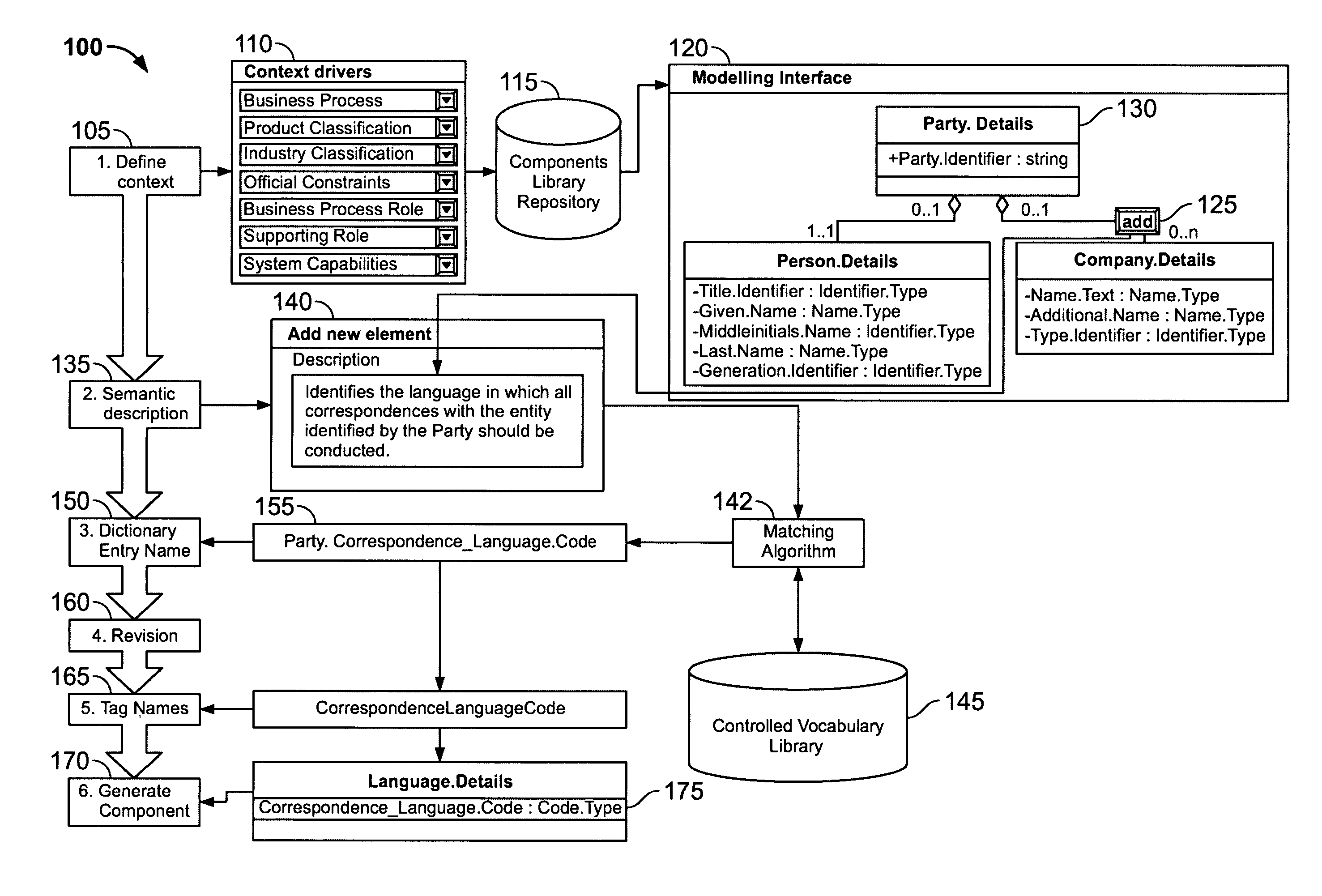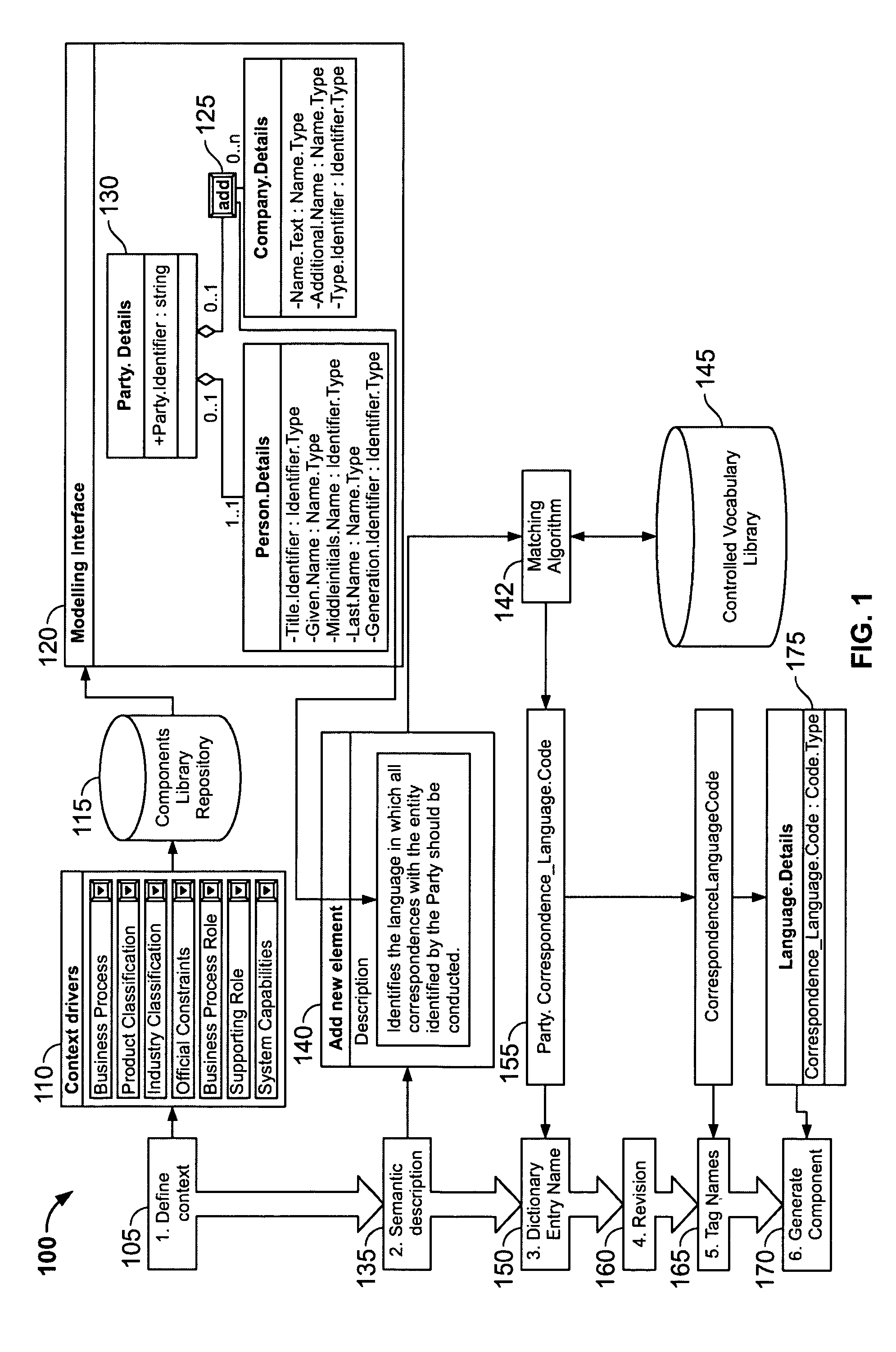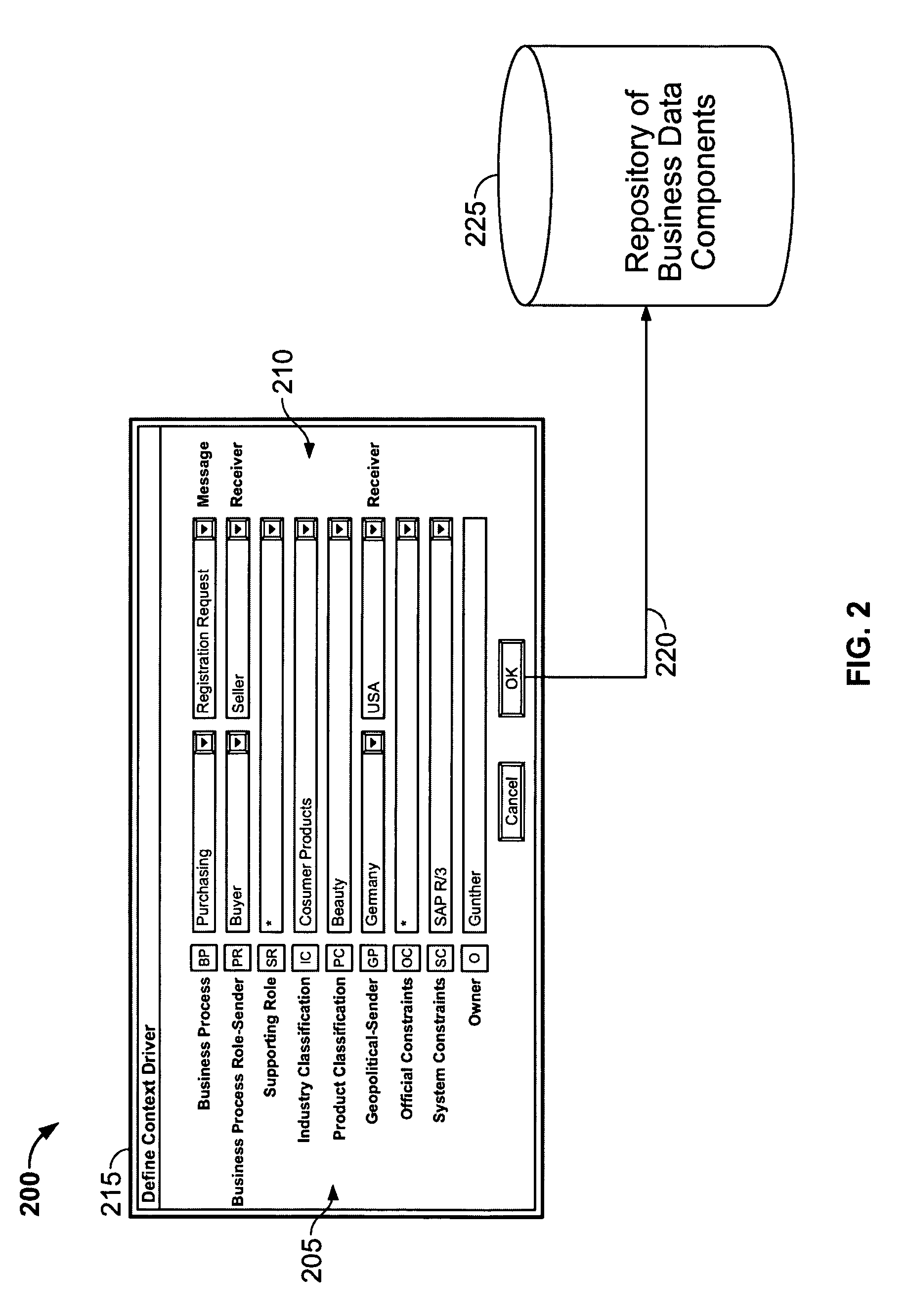Using a controlled vocabulary library to generate business data component names
a business data and component name technology, applied in the field of digital computer data processing, can solve the problems of complex and expensive computer systems, large investment in software, user training, registration, etc., and achieve the effect of maintaining consistency in naming components, precise result in dictionary entry names, and easy understanding
- Summary
- Abstract
- Description
- Claims
- Application Information
AI Technical Summary
Benefits of technology
Problems solved by technology
Method used
Image
Examples
Embodiment Construction
[0022]In general, electronic business communications can be conducted using electronic documents. An electronic document does not necessarily correspond to a file. A document may be stored in a portion of a file that holds other documents, in a single file dedicated to the document in question, or in multiple coordinated files. Electronic documents can be constructed using business information entities. A business information entity (BIE) is an element of business data or a collection of business data with a unique business semantic definition and can include a Basic Business Information Entity (BBIE), an Association Business Information Entity (ASBIE), or an Aggregate Business Information Entity (ABIE). A BBIE represents a characteristic (e.g., a street address) of a specific object class in a specific business context and corresponds to a data type that describes valid values for the BBIE. An ASBIE represents a complex characteristic of a specific object class in a specific busine...
PUM
 Login to View More
Login to View More Abstract
Description
Claims
Application Information
 Login to View More
Login to View More - R&D
- Intellectual Property
- Life Sciences
- Materials
- Tech Scout
- Unparalleled Data Quality
- Higher Quality Content
- 60% Fewer Hallucinations
Browse by: Latest US Patents, China's latest patents, Technical Efficacy Thesaurus, Application Domain, Technology Topic, Popular Technical Reports.
© 2025 PatSnap. All rights reserved.Legal|Privacy policy|Modern Slavery Act Transparency Statement|Sitemap|About US| Contact US: help@patsnap.com



